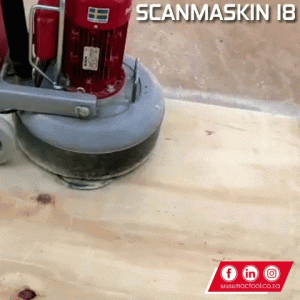
Wood flooring, a testament to human ingenuity and the enduring beauty of nature, has evolved significantly over centuries. From the simple planks of medieval castles to the precisely engineered boards of modern homes, wood flooring has consistently adapted to changing tastes and technological advancements.
A Historical Perspective:
- Early Beginnings: In ancient times, wood planks were primarily used for structural purposes. As craftsmanship improved, wood flooring transitioned from utilitarian to decorative.
- Parquet and Marquetry: The Renaissance period witnessed the rise of intricate parquet and marquetry designs, showcasing the artistry and skill of woodworkers. These elaborate patterns, often featuring geometric shapes and contrasting wood species, became symbols of wealth and prestige.
- Industrial Revolution: The advent of machinery revolutionized wood flooring production, making it more accessible to the masses. Mass production allowed for consistent sizing and improved milling techniques.
- 20th Century Innovations: The development of engineered hardwood in the mid-20th century addressed the limitations of solid hardwood, expanding its applications to a wider range of environments.
The Manufacturing Process: From Forest to Floor:
- Harvesting: Sustainable forestry practices are crucial for ensuring the long-term availability of timber. Responsible harvesting involves selective cutting, reforestation, and minimizing environmental impact.
- Milling: Logs are sawn into planks, with different sawing techniques (plain sawn, quarter sawn, rift sawn) yielding distinct grain patterns.
- Kiln Drying: To prevent warping and shrinking, the wood is kiln-dried to reduce its moisture content to a specific level.
- Planing and Shaping: The planks are planed to achieve a smooth surface and shaped with tongue-and-groove edges for seamless installation.
- Finishing: Prefinished floors undergo staining and sealing at the factory, while unfinished floors are finished on-site.
- Engineered Flooring Production: Engineered hardwood involves bonding multiple layers of wood together, with a top layer of solid hardwood veneer. This process enhances stability and reduces susceptibility to moisture.
Environmental Considerations: Sustainability and Responsible Sourcing:
- Forest Stewardship Council (FSC) Certification: FSC-certified wood ensures that the timber comes from responsibly managed forests. 1
1. squarerooms.com.sg
- Leadership in Energy and Environmental Design (LEED) Certification: LEED-certified wood flooring contributes to sustainable building practices.
- Bamboo and Cork: These rapidly renewable resources offer sustainable alternatives to traditional hardwood.
- Reclaimed Wood: Using reclaimed wood reduces the demand for new timber and adds a unique, rustic charm.
- VOC Emissions: Low-VOC finishes and adhesives minimize indoor air pollution.
Installation Techniques: A Detailed Look:
- Nail-Down Installation: This method is typically used for solid hardwood, where planks are nailed or stapled to a wooden subfloor.
- Glue-Down Installation: Suitable for both solid and engineered hardwood, this method involves adhering the planks directly to a concrete or plywood subfloor.
- Floating Installation: Engineered hardwood can be installed using a floating method, where the planks are glued together at the tongue-and-groove edges and laid over an underlayment.
- Subfloor Preparation: A level, clean, and dry subfloor is essential for a successful installation. Uneven subfloors may require leveling compounds or underlayment.
- Acclimation: Allowing the wood to acclimate to the room’s temperature and humidity for several days before installation is crucial to prevent warping and shrinking.
Maintenance and Long-Term Care: Preserving Beauty and Longevity:
- Regular Cleaning: Sweeping, vacuuming, and damp mopping are essential for removing dirt and debris.
- Preventive Measures: Using furniture pads, trimming pet nails, and avoiding high heels can minimize scratches and dents.
- Humidity Control: Maintaining a consistent humidity level between 35% and 55% is crucial for preventing warping and cupping.
- Refinishing: Solid hardwood floors can be sanded and refinished multiple times to restore their original beauty. Engineered hardwood can also be refinished, but fewer times due to the thinner top layer.
- Spot Repairs: Minor scratches and dents can often be repaired with touch-up kits or wood fillers.
Future Trends in Wood Flooring:
- Wider and Longer Planks: Wide planks create a grand and spacious feel, while longer planks minimize seams.
- Textured Finishes: Handscraped, wirebrushed, and distressed finishes add character and a rustic touch.
- Gray and Natural Tones: Gray and natural wood tones are gaining popularity, offering a modern and sophisticated look.
- Water-Resistant Engineered Hardwood: Advancements in technology are leading to the development of water-resistant engineered hardwood, expanding its applications to kitchens and bathrooms.
- Smart Flooring: Integration of technology, such as embedded sensors for temperature and humidity monitoring, is an emerging trend.
Conclusion: A Timeless Investment:
Wood flooring remains a timeless and valuable investment, offering a blend of beauty, durability, and versatility.
By understanding its history, manufacturing processes, environmental considerations, and future trends, homeowners can make informed decisions that ensure lasting beauty and performance.
From the classic elegance of solid hardwood to the modern versatility of engineered wood, wood flooring continues to enhance the aesthetic appeal and value of homes worldwide.
